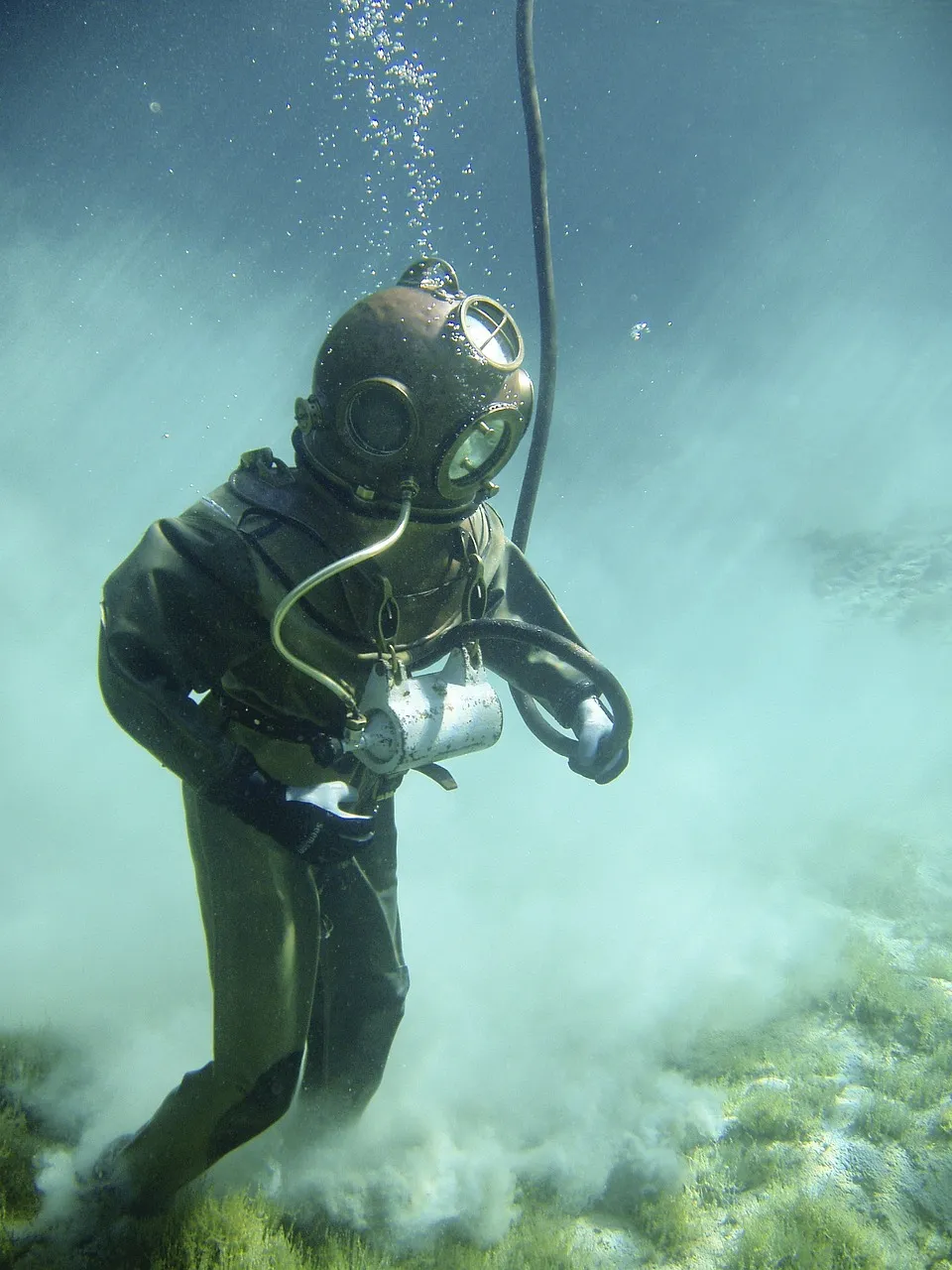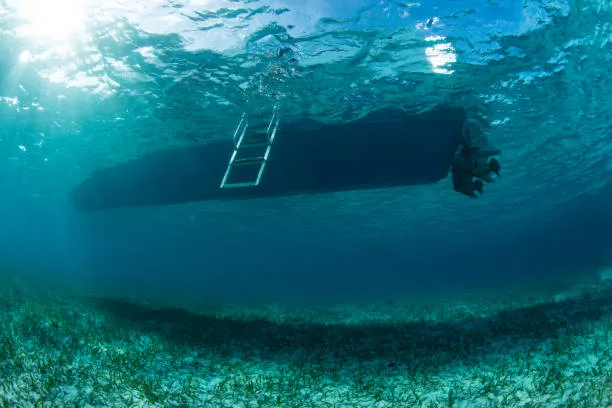Bluetide Group
Preparing marine excellence...
stories that touch
Underwater Hull Cleaning
Marine Operations
4 mins read

A vessel’s lifetime and functionality depend on regular hull cleaning. Biofouling results from marine life attaching to the hull, such as algae and barnacles. The biofouling reduces fuel efficiency and speed of the vessel by increasing drag. Hull cleaning regularly helps avoid these problems, guaranteeing peak performance and cutting down on running expenses.
In addition to compromising vessel performance, biofouling impacts the environment. Local ecosystems may be disrupted by the introduction of invasive species through biofouling. Regulatory agencies have therefore set standards and regulations for hull cleaning to reduce these hazards. Respecting these rules is essential for sustainable marine operations.

The conventional approach to hull maintenance has been manual cleaning. Biofouling is manually removed by divers outfitted with brushes and scrapers. This method requires a lot of work and effort, even though it works well. Furthermore, especially in difficult-to-reach places, it frequently leads to insufficient cleaning and puts divers’ safety at risk.
Hull cleaning has also been accomplished by high-pressure water jets. With strong water streams, these jets destroy biofouling. Despite being more effective than hand cleaning, this technique has the potential to harm the hull’s protective coatings, which will eventually raise maintenance expenses.
Automated Hull Cleaners: The introduction of robotic hull cleaning devices is one of the biggest advances in hull cleaning. Divers are not necessary for the effective removal of biofouling by these automated cleaners, which are frequently fitted with brushes and high-pressure water jets. They guarantee comprehensive maintenance because they can clean the entire hull, even the difficult-to-reach places.
Benefits of Robotic Systems:
A range of brushes are used in contemporary hull cleaning systems to eliminate biofouling without compromising the coatings on the hull. While harsher brushes are utilised for tougher biofouling, soft brushes are employed for delicate surfaces. These cutting-edge brush systems guarantee efficient cleaning without compromising the integrity of the hull.
Magnetic brush systems constitute an additional inventive methodology. These devices hold brushes against the hull with magnetic fields, enabling thorough and accurate cleaning. In order to minimise the possibility of hull damage, magnetic brush systems work especially well at sustaining a steady cleaning pressure.
An innovative method for removing biofouling is cavitation cleaning, which applies the concepts of cavitation. Shock waves and vapour bubbles are created by high-pressure water jets collapsing, causing cavitation. With no surface damage, these shock waves remove biofouling from the hull.

Clean hulls enhance fuel efficiency significantly by reducing drag. These advantages are maximised by using advanced hull cleaning techniques that guarantee complete eradication of biofouling. This results in less fuel being used and fewer greenhouse gas emissions, which helps to make maritime activities more environmentally friendly.
Hull coatings are shielded from damage by contemporary cleaning techniques including cavitation and sophisticated brush systems. By maintaining these coatings, vessels can extend the life of their hulls and save money on maintenance overall by requiring less frequent repainting and repair.
Vessels can adhere to environmental rules by using modern hull cleaning procedures. By lowering the possibility of invasive species spreading and reducing chemical pollution, these techniques aid in the preservation of marine environments.
Automated and robotic cleaning methods improve safety by eliminating the requirement for divers. This reduces the possibility of mishaps and makes it possible to carry out cleaning tasks in hazardous environments where human involvement would be risky.
Artificial intelligence (AI) and machine learning will likely be more heavily integrated into hull cleaning in the future. Robotic system performance may be improved, cleaning procedures can be made more efficient, and maintenance requirements can be anticipated. AI-driven analytics will make proactive hull maintenance possible, which will increase productivity and cut expenses even further.
The development of environmentally friendly cleaning products that are safe for marine life but efficient against biofouling is still being researched. When paired with cutting-edge cleaning methods, these compounds will provide a comprehensive strategy for long-term hull care.
Hull cleaning processes may be supervised and controlled remotely by personnel thanks to remote monitoring and control systems. This will decrease the requirement for on-site staff while increasing the accuracy and effectiveness of cleaning procedures.
The maintenance of vessels has been completely transformed by advances in underwater hull cleaning procedures. These technologies, which range from cavitation cleaning to robotic systems, have many advantages, such as increased safety, hull coating longevity, adherence to environmental standards, and fuel efficiency.
Hull cleaning looks to be even more sustainable and efficient in the future as the marine sector embraces innovation. Using these cutting-edge methods represents a commitment to safeguarding our seas and extending the life of marine assets, in addition to being a matter of operational effectiveness.
Check out our blog on how we handle ROV services.